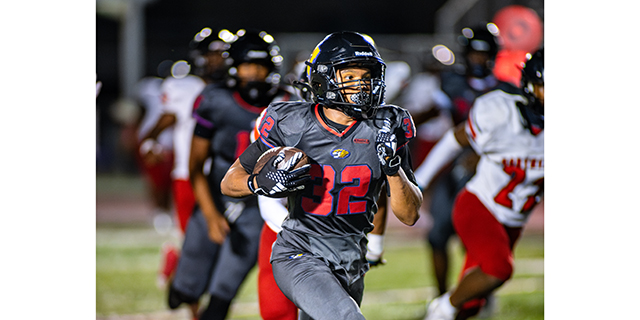What is the Last Supper?
Published 5:00 am Friday, March 25, 2022
‘The Last Supper was crackers with dots on it,” says Devin, 4. “Jesus was there, nobody else. Oh, yeah, the wise men were there eating with Jesus. The sheep came with them.”
Devin, I think you’ve merged two Bible stories into one. As for the crackers with dots, that’s a modern adaptation of the bread Jesus broke and distributed to his disciples.
“The Last Supper is when Jesus and his disciples had their last supper together,” says Morgan, 12. “He broke the bread, and said it was his body and drank the wine together as his blood. The significance it has today is that he meant that he would give up his body on the tree (cross) and shed his blood on the cross as well for our sins.”
Thanks, Morgan, for getting the story straight and pointing out the significance of the bread and wine. Your summary is excellent, but Kayla, 12, says there’s more: “I think the Last Supper is when Jesus called in all his disciples to tell them he would be leaving the Earth but would return later.”
Kayla, you’ve hit on something here. At the supper, Jesus said the cup of wine was the new covenant in his blood, but he also said, “I will not drink of this fruit of the vine from now on until that day when I drink it new with you in My Father’s kingdom” (Matthew 26:29).
I believe what Jesus had in mind here is the marriage supper of the Lamb (Revelation 19:9). It’s the great gathering of God’s people at the wedding feast where Jesus is the groom and his people are the bride. The same word for “supper” is used in the New Testament for both the Lord’s Supper and the marriage supper of the Lamb.
Can anyone conceive of crackers and a shot of grape juice as the main course at the marriage feast of the Lamb? Why then do we call this the Lord’s Supper when there’s no supper?
In the early church, the bread and wine were joined with a complete meal that became known as the “Love Feast,” but “as early as the second century, these two exercises were separated,” writes church historian Philip Schaff.
Mallory, 8, won’t settle for anything less than a Lord’s Supper banquet table: “We eat on long tables with lots of stuff on them. I eat meat, carrots and cakes. I have to because we have a celebration.”
Yes, a celebration! Have you ever wondered how the gospel spread so rapidly in the first century? Schaff also writes that early Christians celebrated the Lord’s Supper with a simple meal of brotherly love in communion with each other and their redeemer. During this meal, they “forgot all distinctions of rank, wealth and culture, and felt themselves to be members of one family of God.”
When distinctions of class, wealth, rank and culture are smashed, the word gets around fast. People saw the gospel in the love Christians had for each other.
Consider the difference between a weekly celebration where people eat together and a brief monthly memorial where people eat a piece of cracker or bread and take a drink of grape juice. The first became known as the “Love Feast,” and the latter is usually called communion.
Think about this: Let’s bring back the Lord’s Supper feast!
Memorize this truth: Matthew 26:29 quoted previously.
Ask this question: What would church look like if Christians started celebrating the Lord’s Supper feast by sharing a common meal every Sunday?
KIDS TALK ABOUT GOD is designed for families to study the Bible together. Research shows that parents who study the Bible with their children give their character, faith and spiritual life a powerful boost.





